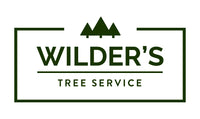Trees are a vital part of any landscape, offering shade, beauty, and environmental benefits. To ensure they remain healthy and vibrant, proper fertilization is essential. Tree fertilization supplies the necessary nutrients that might be missing from the soil, promoting growth, enhancing resistance to pests and diseases, and ensuring longevity. Here’s why tree fertilization is important and how to do it correctly.
Why Tree Fertilization is Important
-
Nutrient Deficiency Many urban and suburban soils lack essential nutrients due to construction, soil compaction, and the removal of natural leaf litter. Fertilization replenishes these nutrients, ensuring trees have what they need to grow strong and healthy.
-
Enhanced Growth Fertilized trees grow faster and develop a robust root system. This is particularly important for young trees, which need a good start to establish themselves and thrive.
-
Disease and Pest Resistance Healthy, well-fertilized trees are more resistant to diseases and pests. Nutrients like potassium and phosphorus play crucial roles in strengthening a tree’s natural defense mechanisms.
-
Improved Aesthetic Appeal Proper fertilization results in lush foliage and vibrant colors, enhancing the overall beauty of your landscape. Healthy trees with full canopies and rich, green leaves are more visually appealing and add value to your property.
-
Environmental Benefits Healthy trees contribute to better air quality, provide habitat for wildlife, and help in reducing soil erosion. By ensuring your trees are well-fertilized, you are also supporting a healthier environment.
How to Fertilize Trees Correctly
-
Know Your Soil Before fertilizing, conduct a soil test to determine its nutrient content and pH level. This will help you choose the right type of fertilizer and avoid over-fertilization, which can harm your trees and the environment. You can buy a kit at your local garden center, online, or send out a soil sample to your local extension office.
-
Choose the Right Fertilizer
- Organic Fertilizers: These include compost, manure, and bone meal. They release nutrients slowly and improve soil structure.
- Synthetic Fertilizers: These provide immediate nutrients and are formulated to address specific deficiencies. Look for a balanced fertilizer with a ratio of nitrogen (N), phosphorus (P), and potassium (K), such as 10-10-10.
-
Timing is Key The best time to fertilize trees is in early spring before new growth begins, or in late fall after the trees have gone dormant. Avoid fertilizing during hot, dry periods or late in the growing season, as this can stress the trees.
-
Application Techniques
- Broadcasting: Spread the fertilizer evenly over the root zone, which extends beyond the drip line of the tree. Water the area thoroughly after application to help the nutrients reach the roots.
- Soil Injection: For large trees, injecting liquid fertilizer directly into the soil around the root zone ensures the nutrients reach deeper roots.
- Foliar Feeding: Spraying a diluted liquid fertilizer directly onto the leaves can provide a quick nutrient boost, but it should not replace soil fertilization.
-
Avoid Over-Fertilization Too much fertilizer can lead to excessive, weak growth and increased susceptibility to pests and diseases. Follow the recommended application rates on the fertilizer package and consider the tree’s size, age, and species.
-
Mulching Apply a layer of organic mulch around the base of the tree, extending to the drip line. Mulch helps retain moisture, regulate soil temperature, and slowly adds nutrients to the soil as it decomposes. Avoid piling mulch against the trunk, as this can lead to rot.
Common Fertilization Mistakes to Avoid
-
Fertilizing Newly Planted Trees Newly planted trees are vulnerable and can be easily damaged by fertilization. Focus on proper watering and mulching during the first year and wait until the tree is established before fertilizing.
-
Ignoring Soil pH Soil pH affects nutrient availability. If the pH is too high or too low, trees may not absorb nutrients effectively. Adjust soil pH as needed based on your soil test results.
-
Using High Nitrogen Fertilizers While nitrogen promotes leaf growth, too much can lead to weak branches and reduced resistance to pests and diseases. Balance nitrogen with other essential nutrients.
Conclusion
Tree fertilization is a crucial aspect of maintaining a healthy and beautiful landscape. By understanding the importance of fertilization and following proper techniques, you can ensure your trees receive the nutrients they need to thrive. For expert advice and professional tree care services, contact Wilder’s Tree Service. Our experienced team is dedicated to helping you maintain the health and beauty of your trees.
Need help with tree fertilization or other tree care services? Reach out to Wilder’s Tree Service today! Our knowledgeable team is here to provide the expertise and care your trees deserve.

